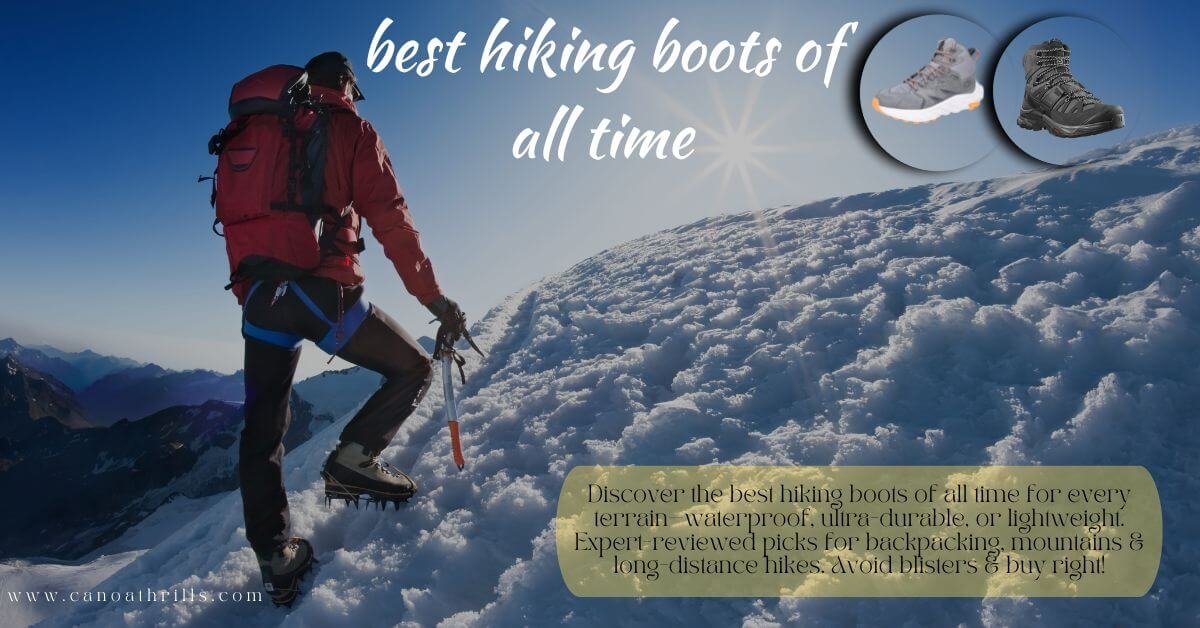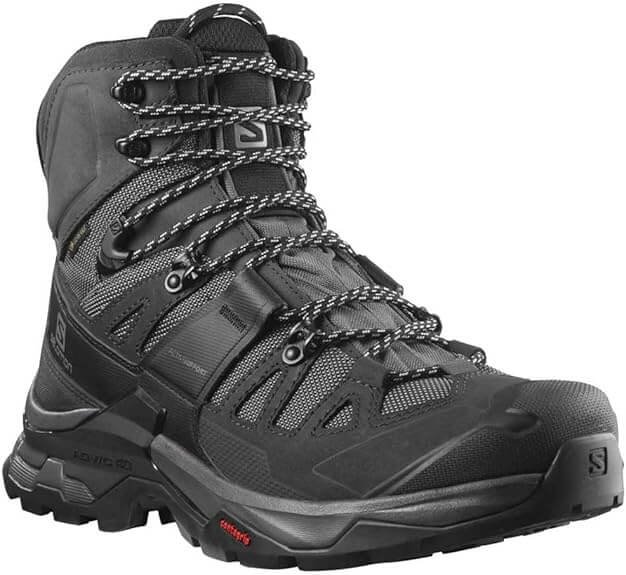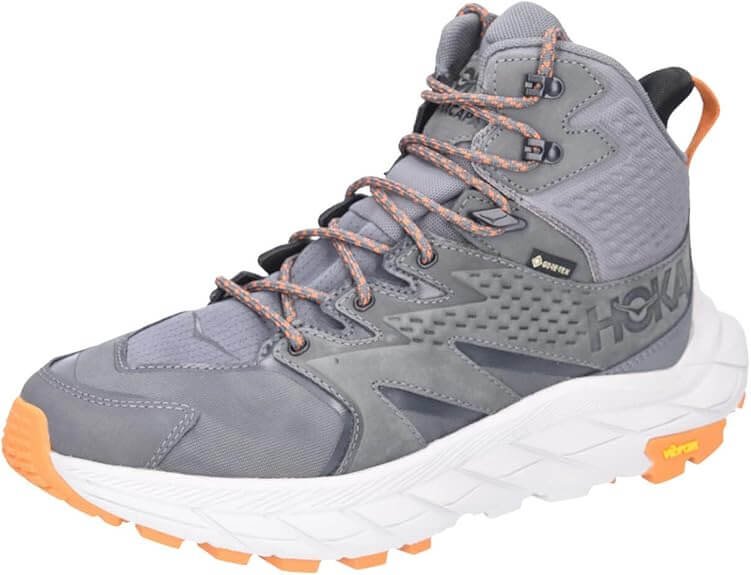
Introduction
The best hikes begin with the right boots. Choose the wrong pair, and each step may feel like foot punishment. But with a good pair of hiking boots? You’ll be comfortable, confident, and ready to take on any trail.
Hiking boots aren’t just gear — they can make or break your safety, comfort, and experience outdoors. The right boots will keep your heels free of blisters, provide extra ankle stability, increase traction, and shield you against the elements.
Whether you’re a casual day hiker, a long-distance backpacker hiking up rocky alpine trails, or shopping for the perfect gift for the hiker in your life, this list of the best hiking boots of all time has you covered.
Here’s what you’ll learn in this post:
- What to look for when buying hiking boots
- Best picks in categories like durability, waterproofing, and budget
- How to pick the correct pair of boots for your look, step by step
- Common mistakes to avoid
- Simple maintenance tips to keep your boots in service longer
Grab your map, and let’s hit the trail in the best hiking boots of all time—your perfect pair is out there!
Key Features to Look for in Hiking Boots
Hiking boots are tailored for different terrains, climates, and hiking styles. Here are essential features you should consider before making a purchase:
1. Durability
Choose durable materials that will hold up to the rigors of rough trails.
- Full-Grain Leather: Most durable and best for hiking in rugged landscapes or wet weather. It is, however, heavier and takes longer to break in.
- Synthetic Uppers (like nylon or polyester): Quicker to break in and lightweight, but not as durable as leather.
Best for: Mountaineers and multi-day backpackers on difficult trails.
2. Waterproofing
Your boots need to keep you dry through rain, mud, and shallow water crossings.
- Gore-Tex & eVent Waterproofing are industry standards for keeping water out while allowing your feet to breathe.
- If you mostly hike in dry conditions, consider non-waterproof boots with breathable mesh uppers.
Best for: Fluency in wet or snowy conditions.
3. Traction & Outsole
Your boots should hold the trail to avoid slips.
- Vibram soles are the gold standard in durable traction.
- Find durable tread patterns appropriate for your terrain (deep lugs for mud or shallow patterns for rocky trails).
Best for: Hikers crossing different terrains, such as mud, rock, and snow.
4. Weight
The lower boots weight, the less load on your legs over a distance.
- If you plan to do any fastpacking or long-distance hikes, lightweight boots are the way to go.
- Heavy Boots provide protection and support; they are slower.
Best for: Speedy tho-hikers who value comfort.
5. Ankle Support
Here’s how to determine the correct cut for your needs:
- High Cut Boots for rough, rocky terrain.
- Mid-Cut Boots for easier day hikes.
- We recommend Low-Cut Boots for Casual Trails and Warm Conditions.
6. Breathability
Breathable boots keep your feet dry and comfortable by allowing moisture and sweat to escape. Look for:
- The best breathable mule: Mesh Panels.
- Wretreats — waterproof membranes for the protection from wet conditions
Best for: Hiking in hot climates or during the summer months.
7. Traction & Grip
Your hiking boot sole should have excellent grip and traction on all types of terrain, including:
- Bringing on the rain – Smooth rainforests.
- Deep lugs and aggressive treads for muddy trails.
- Rugged ground with tough rubber outsoles.
Best for: Hikers who will face a range
For hot weather or longer distances, look for breathable materials, as in mesh. Your feet will thank you.
8. Break-In Period
New hiking boots require time to break in. This is the critical time when your boots start to fit the contours of your feet and break in. That’s why it’s best to wear them on shorter hikes to begin with and gradually step it up as the boots break in.
Wearing them at home or for short walks can also help break them in more quickly. Don’t hurry it — donning stiff or poorly fitting boots too soon can result in blisters, pain in your feet, and an unpleasant hiking experience. Even the best hiking boots of all time require a proper break-in period before they’re able to deliver top performance and comfort over longer treks.
9. Proper Care
If you want your hiking boots to endure countless adventures, the right care from the start is critical. Even the best hiking boots of all time require some TLC to operate at their height of performance.
The first and one of the most vital steps is to break in your feet to the boots before heading for an extensive trek. That break-in period helps the boots shape to your feet, which goes a long way to eliminate the chances of blisters, hot spots, and general discomfort.
To properly break in new hiking boots, wear them around the house in short chunks of time or take the boots on a few short hikes. Most experts suggest logging at least 20 miles in your boots before trying longer, more strenuous trails.
10. Maintenance & Care
If you take care of your hiking boots, this will help them to last longer so they can offer you the support and protection you need on your future hikes. Even the best hiking boots of all time need some regular TLC to stay performing as well as they will for as long as possible. Now, here are some required maintenance tips:
- Cleaning: Use a soft brush or cloth to remove dirt or debris from your boots after each hike. This prevents any accumulation of dust and dirt that might harm the material over time. Use mild soap and warm water for deeper cleans — but avoid strong chemicals.
- Drying: After every use it is important to Dry your boots properly. Just keep them away from direct heat sources, since this can cause the leather to crack or warp. Instead, fill them with newspaper or paper towels and leave them to air dry in a well-ventilated place.
- Waterproofing: Waterproofing means Most of the best hiking boot of all time come pre-added with a waterproof layer, but you still have to take care of it. When water no longer beads on the surface, you know it’s time for a new waterproofing treatment. That way your feet stay dry and your boots remain toasty.
- Storage: When not in use, keep your hiking boots in a cool, dry location with good air flow. Stay away from damp or humid places, as this can encourage mold growth and material breakdown. Boot trees or sifting them with paper can help keep their shape.
- Replacing worn out soles: Even the sturdiest boots will eventually need a revamp. If the tread on your soles begins to wear down, it’s time to get a new pair. Good traction is critical for safety on rugged terrain, and the best hiking boots of all time aren’t much good without the right grip.
Traditional mistake — Hikers just overlook the break-in period. New hiking boots — especially leather ones — require time to conform to your feet. Wear them around the house or on shorter walks before finally committing to a long trek. This prevents blisters and ensures you’re getting the maximum benefit from your boots on day one.
Best Hiking Boots of All Time – Top Picks
This list rounds up the best hiking boots for different conditions and preferences.
Best Overall Hiking Boot
Salomon Quest 4 GTX

- Why it’s great: The ideal blend of comfort, durability and cutting-edge features such as Gore-Tex waterproofing and immense ankle support.
- Best for: Weekend trips on rugged trails or long-haul backpacking.
Best Waterproof Hiking Boot
Lowa Renegade GTX

- Why it’s great: Amazing waterproofing and a mid-cut for ultimate stability.
- Best for: Wet weather, snow-covered trails or unpredictable conditions.
Most Durable for Rugged Terrain
Scarpa Zodiac Plus GTX

- Why it’s great: Vibram outsoles and stiff midsoles make it the go-to boot for extreme environments.
- Best for: Mountaineering and multi-day backpacking in extreme conditions.
Best Lightweight Boot for Long Distance
Hoka Anacapa Mid GTX

- Why it’s great: Light yet supportive, provides a plush ride over many kilometers.
- Best for: Thru-hikers and anyone looking for more comfort on fast, flat trails.
Step 1. Identify Your Hiking Style
- Day Hikes: Lightweight boots or trail runners.
- Backpacking: Heavy-duty boots with plenty of support.
- Mountaineering: Rigid outsoles, burly support, and heavy-duty waterproofing.
Step 2. Focus on Fit
- Take your foot measurements and consider buying a size up for toe wiggle, arch and heel support.
- Try on boots in the afternoon when your feet are a little bit swollen, as they will be on a real hike.
Step 3. Match the Terrain
- Mud? Opt for waterproof boots.
- Rock? Go for grippy outsoles.
Step 4. Don’t Overlook Socks
Your hiking socks matter. For extra coverage wear wool or synthetic socks that they have proper materials.
Mistakes to Avoid
When it comes to picking the best hiking boots of all time, even seasoned trekkers make a few mistakes. Here are some common mistakes to avoid so that you can hit the trail with confidence:
- Buying boots based on looks or brand alone: While good looks and a name can be tempting, do not allow these factors to be your main attributes when choosing between boots. Consider function, fit, and comfort more than looks. The best hiking boots of all time are high-performers, not just good on the eyes.
- Prioritizing Style Over Comfort: Boots that look cool will leave your feet unhappy on rocky trails or after a long hike. Comfort, support, and durability should always come first.
- Right weight for your adventure: Lightweight boots are ideal for fast hikes, but if you’re going rugged or multi-days, you may want something that fits your environment better. Choose your boot weight based on your hiking goals.
- Choosing the Wrong Weight: Not getting your feet properly measuredProper sizing is critical. Always try on boots with the socks you’ll be wearing in the trail, and if you can, go to a professional fitter.
- Overlooking waterproofing features: If your hiking will involve wet or unpredictable weather, don’t forget about waterproofing. Wet feet can spoil an otherwise great hike — and degrade your boots over time.
Avoid these mistakes, and you’ll be well on your way to finding a pair of hiking boots that can keep up with all your adventures.
Care and Maintenance Tips
Extend the life of your hiking boots with these easy steps:
- Clean Regularly after every hike to remove dirt and debris.
- Maintain Waterproofing by reapplying waterproof sprays or leather conditioners.
- Store Wisely in a cool, dry place to prevent structural damage.
Still Wondering? Answers to Common Questions
Should you be spending big money on a pair of hiking boots?
Yes, good boots are worth the money when it comes to your comfort and safety. Durability, support and advanced materials make the best hiking boots of all time ready to tackle tough terrain and long distances.
How long do hiking boots last?
With care and maintenance, a good pair of boots should last anywhere from 500–1,000 miles, depending on the surface and how frequently you hike.
Do you need to size up in hiking boots?
You need a little room to spare in the toe box to account for foot swelling and thicker hiking socks. It should have a snug heel and a roomy toe box.
What’s the difference between hiking shoes and hiking boots?
Hiking shoes are lighter and more pliable, designed for groomed trails. Hiking boots provide additional ankle support and protection, so they’re suited for rough, uneven or multi-day hikes.
How can I tell if my hiking boots fit properly?
When you stand in them, you want a thumb’s width or so of space in the toe area. Your heel should remain in place with no slipping, and there should be no pinching or tightness.
Can I wear running shoes to go hiking?
Trail running shoes can be great for lightweight hikes, but they’re not going to provide as much ankle support or durability as a pair of actual hiking boots will, especially for rocky or steep trails.
How do I break in new boots?
Begin with short walks the around the home or neighborhood. Increase your distance gradually so the boots mold to your feet and you don’t get blisters.
Do lightweight hiking boots last?
Most modern long distance lightweight hiking boots are actually made of rugged, high performance materials that optimally combine weight with durability.
Find Your Perfect Pair and Hit the Trail
It doesn’t have to be hard to choose the best hiking boots. Much like the dependable Salomon Quest 4 GTX or the affordable Merrell Moab 3, a proper pair will keep your feet comfortable, protected, and ready for adventure.
Need more hiking advice? Match your kicks with the right gear with our guide on the Best Backpacks for Hiking. Happy hiking!





